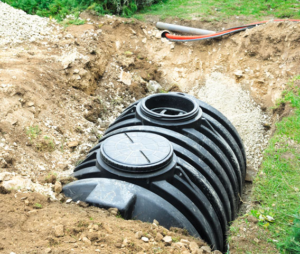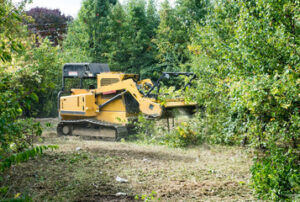A dog boarding facility provides professional care, socialization, and safety for your pets while you’re away. It can also help alleviate separation anxiety, so your pet’s stay is as stress-free as possible.

Make sure your pet is up-to-date on all vaccinations before dropping them off at a kennel. This includes rabies, DHPP/DHLPP, and bordetella. Read on Sierra Canine for more details.
Dogs are creatures of habit and thrive in familiar environments. Abrupt changes in environment can cause stress, anxiety and behavioral issues. Ensuring your pet is comfortable during their stay at the boarding facility helps reduce these problems and makes the separation easier on you both.
Comfort also promotes better sleep and appetite, both important factors for a healthy animal. Whether your pet is at a traditional kennel or a specialized boarding facility that acts more like a doggy hotel, it is important to communicate with the staff about your pet’s routine and specific dietary needs to help make their stay as enjoyable as possible.
The kennel environment is very different from the home setting for many dogs. Some may find this unfamiliar and stressful, especially if they are unused to the loud noises and bustle of a boarding facility. Fortunately, new boarding options have been developed that act more like pet hotels to provide a luxurious experience for pets during their stay.
In addition to being able to follow your pet’s specific routine, specialized boarding facilities can often accommodate for medical needs, such as medication or dietary restrictions. Some may even have a veterinarian on-site or in the building to handle emergency situations that arise while your pet is at the facility.
Whether it is for health reasons, dietary restrictions or a need to keep up with their exercise schedule, it’s important that your pet gets plenty of physical activity while they are at the boarding facility. Providing your pet with enough space to move around, along with incorporating playtime, walking sessions and puzzle toys into the daily routine helps ensure that your dog feels entertained and is well-rested when they return home.
Socialization
A good boarding facility will allow your pet to interact with other dogs while staying there. This will provide your dog with social stimulation in a safe and controlled environment, which helps them become more adaptable to different situations and people. This will also help them develop a healthier temperament by reducing anxiety and aggression. It will also make them more able to burn off excess energy, which can prevent boredom.
If you have a shy or nervous dog, it’s important to find a facility that prioritizes socialization. These facilities will usually have a detailed meet-and-greet process that allows them to match your pet with playmates of similar temperament. In addition, they will use positive reinforcement to reinforce desirable behavior during social interaction and will keep an eye on the health of all their guests.
Boarding facilities also have a much more comprehensive approach to dog care than a pet sitter, which means that they are able to respond more quickly to any medical issues that arise. In the event of a serious emergency, they will often have established relationships with local veterinarians or emergency veterinary clinics that can be contacted immediately.
The undivided attention that a boarding facility can offer is more than you would get at a private home, but it can still be a concern if your pet has a medical condition. In this case, you should make sure that your pet is up-to-date on all of its vaccinations before you leave it with a boarding facility. Additionally, you should ask if they require proof of heartworm prevention and something to control fleas and ticks. These precautions are especially important because if one of the other pets at the facility is infected, your pet may be exposed and could contract the disease as well.
Exercise
Dogs are naturally energetic animals, and boarding facilities provide them with a chance to run, play, and socialize daily. Regular exercise helps dogs maintain a healthy weight and strengthens their muscles, which can minimize destructive behaviors like chewing or digging. Some boarding facilities offer group play sessions with other dogs, while others allow pups to romp around in safe outdoor spaces.
When choosing a boarding facility, ask for details about the staff members and their qualifications. Find out how much experience they have working with pets and what types of training they receive. Then, look at the facility’s schedule for walking, feeding, and nap times. Finally, determine whether the kennel has a low ratio of dogs to caregivers because this may indicate more personalized care.
Many pet owners feel nervous about leaving their dog in the hands of strangers. However, reputable dog boarding kennels prioritize not only a pet’s physical safety but also their mental health and well-being. In addition to daily walks, kennels feature exercise activities that include group play and supervised outdoor romps, as well as one-on-one attention from caregivers.
Some boarding facilities even allow pet parents to check in with their dogs while they’re away. This can include phone or video chats, as well as the ability to upload photos and videos. These services give pet parents a glimpse into their pet’s vacation, which can reduce the stress of being separated from home. Additionally, many pet boarding facilities also provide a veterinary contact number in case of an emergency.
Medications
Medications are often needed for pets to live comfortably and safely. When you board your pet, you can be sure that they will receive the appropriate medication at the right time. This includes oral medications, such as antibiotics and pain relievers. Depending on your pet’s condition, they may need injections or other more precise medications, such as insulin.
A veterinary technician or nurse is typically on hand at medical dog boarding facilities to monitor your pet’s condition and provide emergency care when necessary. These technicians are highly trained in administering a variety of medication. They are also experienced in providing the right diet for your dog to ensure a speedy recovery.
Some dogs have difficulty accepting medication, even when given with a treat. If this is the case with your pet, consider using an app to send you reminders for giving them their medication, so you can be certain it is being taken properly. This is particularly important for older animals, who may have a harder time swallowing pills.
Many facilities are experienced in treating pets with a variety of conditions, including allergies, diabetes, heart disease, seizures, and other chronic ailments. They are often equipped with the tools to manage these conditions and can keep your dog comfortable and happy during their stay.
When it’s time for you to pick up your pet, they’ll be greeted with loving attention and reassuring care. Reintroduce your dog to their home environment gradually, and allow them some time to rest and recover before returning to their normal activities. Remember to bring a collar with up-to-date identification tags, and include any information that might be helpful for the boarding facility, such as medical needs and dietary requirements.
Attention
Professional boarding facilities provide constant, expert supervision. They are experienced in addressing issues that arise, such as medical or behavioral concerns. This ensures your dog receives the care they need and that their specific dietary needs are met. Boarding facilities also adhere to strict standards regarding cleanliness and safety. These measures protect your pet from illness and injury while reducing stress.
Dogs thrive on routine, and a well-established daily schedule can reduce anxiety during a boarding stay. A reputable boarding facility will follow your dog’s regular feeding, exercise and sleep routines to create a sense of familiarity that makes the transition to being away from home less stressful.
Inquire about the staff-to-pet ratio and their level of experience. Ask about the facility’s emergency procedures and how they are prepared to handle any health issues that may arise during your dog’s stay. This information will help you decide if you want to board your dog at a professional facility or consider alternatives like home boarding or a pet sitter.
The emotional state of your dog is a key consideration when making a decision about boarding. If your dog is very stressed or aggressive towards other dogs, a boarding facility might not be the best option. Choosing the right facility and establishing clear communication with caregivers are essential. In addition, having your dog up-to-date on required vaccinations and a parasite control preventative can further reduce stress and prevent illnesses while your dog is away from home.








